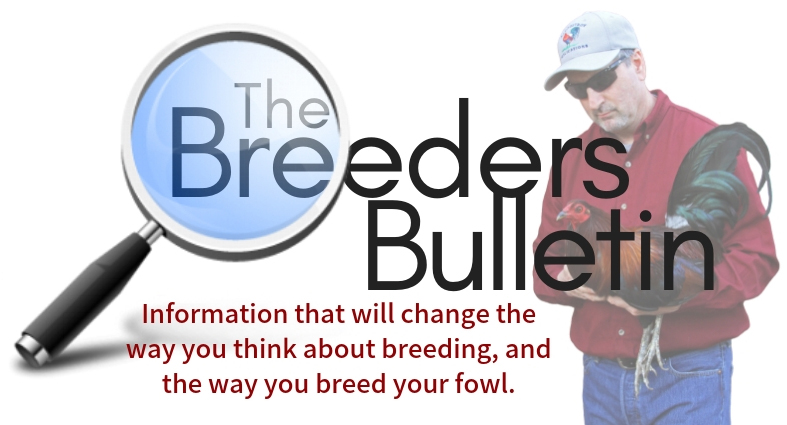By Kenny Troiano
Copyright © 2019 by Kenny Troiano/Maximus Troy Publications
As you will see, there are good times and bad times to select and purchase good fowl. The best time of year to select broodfowl is when the birds look and act their best. Success in this area is all about timing. For example, I would purchase broodfowl only when the birds are fully grown and in good feather. Most fowl are at their best during late winter and early spring (typically in December on through to March). By purchasing fowl at this time you avoid many problems, such as, acclimating your new fowl to drastic geographical changes, especially during the molt (the dropping of old feathers and growing new ones), and exposure to fewer diseases. This includes fowl pox, external and internal parasites, and problems associated with the respiratory system.
Special Note of interest: when purchasing fowl, be away of diseases, such as Infectious Coryza. The only cure is to depopulate and start over.
Breeding Season: Another benefit of purchasing broodfowl in late winter to early spring is that it allows you to take advantage of the upcoming breeding season. While many domestic chickens, such as Plymouth Rocks and Rhode Island Reds, lay eggs throughout most of the year, American Games are seasonal layers. They normally begin the breeding season in February and will usually end sometime in late May to early June. American Games, if left to their own devises, will typically start laying in early spring, mate soon after, and raise their chicks in late spring to early summer. Once the chicks are weaned, they will take the rest of the year off. This allows the hens to get through the summer months (molting time) unhindered, and recover through the winter months. By the time spring comes around, they are in good shape for the following breeding season.
Special Note of Interest: Any fowl that cannot make it through the molt and the cold, wet weather of the winter months, without taking medications should be culled. Fowl that need medicines to survive are constitutionally week, and in turn produce week offspring.
American Games favor the spring for the same reason that wild birds do, it’s Mother Nature’s natural cycle for the creation of new life. It is a more advantageous time of year for producing strong, healthy chicks. For instance, the weather is warmer, but still cool enough to discourage parasites and some diseases. There are more daylight hours in the spring, which encourages good fertility and egg laying. The grass is greener and the trees are full in the spring (They need good green grass to eat and the trees for shade and shelter). For birds that are free ranged, there is more to eat as well, such as bugs and seeds.
There are many who like to hatch their chicks in the winter, they feel they gain an advantage by getting the birds off early. However, this usually requires that you use artificial lighting to stimulate early fertility and egg laying, and brooders for rearing the young. You will also have to deal with the cooler, wetter times of the year as well, which presents its own special kind of problems.
The worst time to purchase fowl, but the best time to visit a breeder’s farm: the summer and fall months are the most miserable times of the year. It’s hot and humid, and it’s the time of year when the birds are molting (loosing feathers and growing new ones). When they are molting they are very pale in the face, and are usually running a fever as well. It is at this time that they feel and look their worst.
Although this is the worst time to purchase fowl, some say it is the best time for observation. By visiting the breeder’s farm in the fall, you will see, firsthand, the health and fitness of his birds, and how well they are managed. Look for fowl that look sickly. If chickens are going to get sick, it is in the summer and fall months when it will occur most. The summer weather along with the molt creates stress. Stress allows disease to arise. If their birds are constitutionally week, you will see evidence of it at this time.
Chickens and gamefowl should be healthy at all times, no matter the time of year. If you see evidence of disease, go home, clean and disinfect your shoes and clothing, and look for another breeder that raises the fowl you like.
Never rush into a family of fowl. I suggest that you take your time and find the right fowl for you. If you notice any red flags, just keep on a moving.


